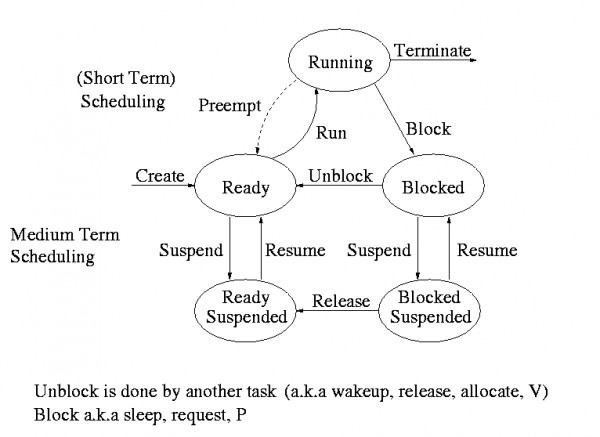
All processes, upon entering into the system, are stored in the Job Queue.
Processes in the Ready state are placed in the Ready Queue.
Processes waiting for a device to become available are placed in Device Queues. There are unique device queues available for each I/O device.
A new process is initially put in the Ready queue. It waits in the ready queue until it is selected for execution(or dispatched). Once the process is assigned to the CPU and is executing, one of the following several events can occur:
The process could issue an I/O request, and then be placed in the I/O queue.
The process could create a new subprocess and wait for its termination.
The process could be removed forcibly from the CPU, as a result of an interrupt, and be put back in the ready queue..